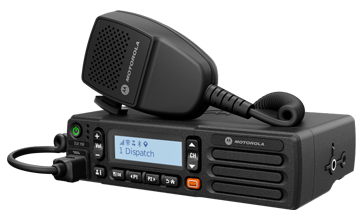
Following the introduction of its portable TLK 100 last year, Motorola Solutions has introduced the TLK 150, a mobile radio with the same push-to-talk capability that runs on a cellular network, but that’s designed to be installed in or on a vehicle.
The TLK 150 addresses a few of the challenges posed by handheld portable radios. With the in-vehicle version, there’s no battery to charge. The unit won’t be subjected to the elements. And because of the TLK 150’s fixed antennas, there’s less risk of signal loss when communicating from inside the vehicle.
“This is going to be good fit for customers that have a fleet of vehicles, local or nationwide, and need a simple, cost-effective way to communicate with drivers and track vehicle locations,” said Aaron Mulkey, BAYCOM Communications Consultant. “The TLK 150 can benefit any organization that manages delivery or logistics vehicles, school buses, or trucks that transport manufactured goods from one site to another.”
Compared to conventional two-way radios, the TLK 150 mobile units also offer:
- Nationwide coverage with WAVE OnCloud
- The ability to bridge multiple locations, facilities and operations without needing to set up or maintain a complicated infrastructure
- Rapid deployment: No need for FCC or spectrum licensing, or manual programming
- Lower cost
Compared to smart phones, the TLK 150 mobile units offer:
- Greater durability
- Ease of use: Communicate instantly with team members across the country at the push of a button.
- Fewer distractions: No texting or internet, so your teams can focus on critical voice and team communications
- Support from BAYCOM, not a cell phone carrier
- Lower upfront costs
“One of the other big selling points is that you can integrate these devices with existing communications solutions,” said Mulkey. “WAVE OnCloud does have a phone app. So theoretically, you could have executives on smart phones using Motorola’s WAVE OnCloud application to do push-to-talk. You could have schedulers, dispatchers or maintenance personnel on conventional radio systems and tie them all to the TLK 150s out on the road—extending the reach and reliability of existing solutions.”
Learn more about the TLK 100 and TLK 150 two-way radios on our website or contact us to learn more.
